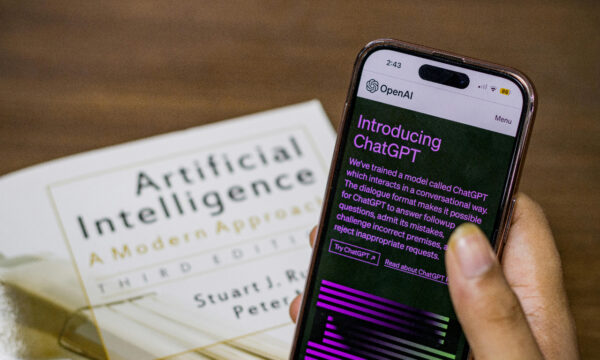Optimising recruitment processes with cutting-edge technology

In today’s fast-paced corporate environment, recruitment technology has become a game-changer. This burgeoning field offers a wide array of tools that streamline and augment various facets of the talent acquisition process. The recruitment technology landscape has evolved significantly from traditional applicant tracking systems (ATS) to cutting-edge AI-driven platforms over the past decade. One key example of such transformative tools is hiring software, which has radically improved how organisations manage their end-to-end hiring workflows.
The capabilities of modern recruitment technology extend beyond mere automation of mundane tasks. These tools provide insightful data analytics and metrics that enable recruiters to make informed decisions. This saves invaluable time for hiring teams and enhances the overall candidate experience. By understanding and leveraging these advanced tools, businesses can significantly enhance their ability to attract, evaluate, and retain top talent in a highly competitive market.
Benefits of recruitment technology
- Efficiency: Automation is one of the most compelling benefits of recruitment technology. The time and effort needed for hiring operations can be significantly decreased by using recruitment software, which automates repetitive tasks like reviewing resumes, scheduling interviews, and sending follow-up messages. As a result, HR teams can dedicate more resources to strategic initiatives like employee engagement and talent development.
- Better candidate experience: Candidate experience is a crucial factor in successful recruitment. Tools that enhance communication and provide timely feedback can significantly improve how candidates perceive the hiring process. Features like real-time status updates and personalised communication can make candidates feel valued and informed throughout their journey.
- Data-driven decisions: Access to comprehensive analytics and reporting capabilities allows companies to make data-driven hiring decisions. By analysing metrics such as time-to-hire, source of hire, and candidate drop-off rates, organisations can continually refine and optimise their recruitment strategies. According to a report by SHRM, companies that leverage such data-driven approaches see a marked improvement in both hiring efficiency and quality.
Key features to look for
Selecting the best recruitment platform might be difficult because there are so many options on the market. However, focusing on certain key features can help you make an informed decision:
- ATS integration: An effective recruitment platform should offer seamless integration with your existing applicant tracking systems. This ensures that you can continue to use your current workflows while enhancing them with new functionalities.
- AI and machine learning: Artificial intelligence and machine learning are examples of cutting-edge technology that can greatly increase the effectiveness of your recruitment efforts. AI-driven algorithms can automate candidate screening, match skills with job requirements more accurately, and even predict candidate success within the organisation.
- Collaboration Tools: Recruitment is often a team effort involving multiple stakeholders. Effective collaboration tools are essential for facilitating internal communication and feedback. Features such as shared dashboards, real-time updates, and collaborative evaluation forms can ensure that everyone is on the same page.
Success stories
The transformative potential of recruitment technology is evidenced by numerous success stories across various industries:
- Company A: By integrating an AI-driven recruitment platform, this company was able to reduce its time-to-hire by 30% over a span of six months. The HR team was able to spend less time on administrative duties and more time interacting with candidates because to the automation features.
- Company B: Another enterprise saw a 25% increase in candidate satisfaction scores after implementing a new applicant tracking system. The platform’s enhanced communication features and real-time status updates made candidates feel more informed and engaged throughout the hiring process.
These real-world examples from Forbes vividly illustrate the tangible benefits that advanced recruitment technologies can bring to organisations.
Implementing recruitment technology
Adopting new recruitment technology can be a formidable endeavour. However, a systematic and strategic approach can make the transition smoother:
- Assessment: Begin by performing a thorough evaluation of your present hiring procedures. Determine the precise features you require in a new platform by identifying your problems and potential areas of development.
- Training: Ensure that your HR team receives thorough training on the new system. Comprehensive training programs can help your team fully understand and utilise the platform’s features, maximising its potential benefits.
- Feedback loop: Establish a continuous feedback loop to monitor the performance of the new system and gather input from users. Regular feedback will help make iterative improvements, ensuring the platform remains aligned with organisational needs.
Future trends in recruitment technology
The recruitment technology landscape is continually evolving, with several exciting trends on the horizon:
- Blockchain technology: Blockchain offers promising applications in recruitment, particularly for verifying credentials and ensuring data integrity. This technology can provide a tamper-proof method for validating educational qualifications, work history, and other important candidate information.
- Virtual reality (VR): VR can be used for conducting remote interviews, providing immersive candidate experiences, and even virtual job previews. This might be especially helpful for businesses that frequently hire remotely or want to draw in tech-savvy applicants.
- Predictive analytics: Predictive analytics is expected to be used more often since it enables businesses to anticipate their employment requirements and create talent pipelines in advance. This can assist in keeping a constant supply of excellent applicants who are prepared to start working as soon as the opportunity presents itself.
Organisations may maintain an advantage in the competitive employment market by monitoring these trends and making sure they can successfully and efficiently attract and retain top personnel.
The editorial unit



















Facebook
Twitter
Instagram
YouTube
RSS